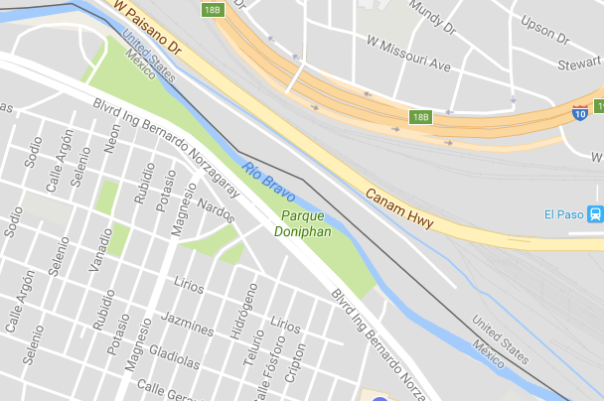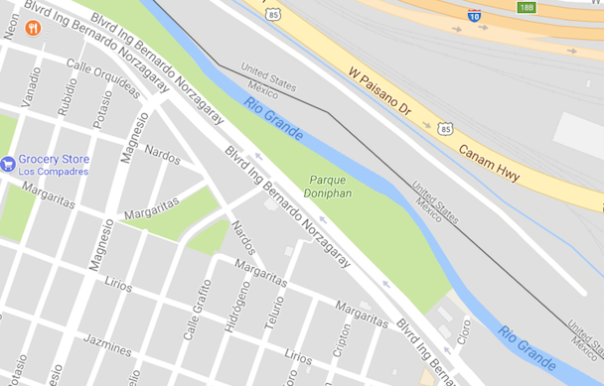America and Americans: The people of a country, or a continent?by Ted Campbell |
What does it mean to be an American, geographically and linguistically? We all know that the internet provides plenty to annoy and offend. Vindictive and ignorant debates rage in the comment sections of nearly any news article, no matter what it’s about. I avoid reading the comments on news stories about Mexico, which inevitably include […]
Ted Campbell | August 17, 2
America and Americans: The people of a country, or a continent?
Posted by Ted Campbell
What does it mean to be an American, geographically and linguistically?

We all know that the internet provides plenty to annoy and offend. Vindictive and ignorant debates rage in the comment sections of nearly any news article, no matter what it’s about.
I avoid reading the comments on news stories about Mexico, which inevitably include some variation on “I’d never go to Mexico,” “It’s a failed state,” or the ever-charming “This is why we need to build a wall.”
Statements like those are fodder for multiple blog posts. But in this one, I’d like to address a dispute that seems to come up often: the term America.
One argument is that people from the U.S. call themselves Americans out of disrespect for all the other people who live in the American continent, as if the Chinese called themselves Asians, somehow disregarding all the other people who live in Asia.
Someone brings this up, and the opinions fly. Well, both sides have a point, which is totally determined by their perspective.
As a foreigner who lives in Mexico, teaches English and speaks Spanish, I understand both perspectives, which I’ll explain below. I do this because I find it interesting, but also because it’s a good example of a disagreement that may seem to have a political basis, but is really just a matter of language and geography.
So, in the interest of better understanding between neighbors…
America the continent
As I explained, the complaint is that when people from the United States call themselves Americans, they are somehow disregarding all the other people who come from the continent America: Mexicans, Jamaicans, Bolivians, Brazilians…
The Mexican norteño group Los Tigres del Norte wrote a song about it, “Somos Mas Americanos”—“We are more American”—in which they sing about how, because most Mexicans are of indigenous or mixed descent, while most Americans are not, Mexicans are more American than Americans.
It’s a valid point. I translated the song in this article, and you can see it performed with Zach de la Rocha from Rage Against the Machine here:
Well, what is America? Here’s our first problem. People from the United States learn in school that the world has six continents (seven if you include Antarctica): Europe, Asia, Africa, Australia/Oceania, North America, and South America.
Ask someone from Mexico (or elsewhere in Latin America, presumably) how many continents there are, and they will tell you five. They’re taught in school that North and South America are one continent, simply America.
I’ve even had people argue with me, saying that of course they’re one continent because it’s one contiguous land mass, connected by Central America. Ok, but what about Europe and Asia?
Bickering about this is pointless. Humans decided what a continent is—apparently there is no universally objective definition of a continent. It’s not like math, in which one plus one is always two. Or other aspects of geography, like how Everest is the highest above-land mountain in the world, no matter where you went to school.
If some humans believe that America is one continent, and some believe it’s two, then neither is wrong or right—these are simply different ways of looking at the world.
Consider this: Plenty of places have different names in Spanish and English. In English it’s the Rio Grande; in Spanish, el Rio Bravo. In English it’s the Gulf of California; in Spanish, El Mar de Cortés (Sea of Cortez.) Who’s right?


But back to continents. Differences in understanding geography create these differences in language.
In English, people from the United States, Mexico, and Jamaica are North Americans. People from Colombia, Bolivia or Brazil are South Americans.
In Spanish, because the continent is America, anyone from the continent is called an americano. The term norteamericano (North American) usually refers to people from the United States.
Unless they’re familiar with the differences in meaning between Spanish and English, most Mexicans would not consider themselves North American. In fact, many believe that North America begins where Mexico ends. I’ve read Mexicans writing in English who use the term “North American” for people from the U.S., probably to avoid using American/americano, although this will confuse English-speaking readers because they understand that North America includes Mexico.
This brings us to another language problem: the term Latin America, a catch-all for most of continental North and South America south of the U.S.-Mexican border. I’m no statistician, but I’m pretty sure that most people who live in Latin America are of mixed or native descent, not Latino, and certainly not Hispanic. But we use these terms out of convenience.
America the country
People in the U.S. call themselves Americans for one main reason: the English language lacks any other adjective for them.
In Spanish, there is the adjective estadounidense, like “United Statesian.” This sounds awful in English, and besides, new words in a language emerge organically—it’s nearly impossible to force people to use them, and they’re often met with strong opposition, as in the case of gender-neutral pronouns like “xe.”
In Spanish, however, estadounidense works just fine. When someone asks, I always use estadounidense to avoid stepping onto a cultural landmine. I never call myself americano in Spanish, and I don’t use norteamericano because in my worldview, as someone educated in the United States, Mexicans are North Americans too.
For these same reasons, in English I avoid using “America” as a noun to describe the country. United States is clear and precise to both English and Spanish speakers. But “American” is the only option for describing the people, other than the convoluted “people from the U.S.,” which I’ll admit to using sometimes.
The good news is that these linguistic pissing matches seem to only take place on the internet. Most people—Mexicans and Americans included—are far too polite and tolerant to squabble about it face-to-face.

So there you go. I hope I’ve made this clear. Now that you know the different meanings of the term American in English and Spanish, please ignore the possible political connotations. People simply use it out of convention, not from a lack respect.
Of course, feel free to disagree in the comments below.
